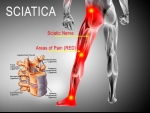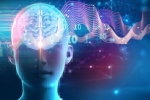Home » Blog
| Stem Cell, PRP, Acupuncture in Queens & Long Island, New York
Blog | Stem Cell, PRP, Acupuncture in Queens & Long Island, New York
Realignment Therapy for Your Spine - Our providers are experts in treating misalignment from segmental dysfunction. We have an extensively trained and formally experienced team of pain management specialists. We utilize advanced techniques to help alleviate any forms of spinal dysfunctions you or your family may be suffering from.
Read more
You will no doubt have heard of hypnosis. You might have even seen dramatic hypnosis on stage or TV. Don’t worry, real hypnosis is not about making you act in a way that is out of your control. Real clinical hypnotherapy is a safe, relaxing way to address psychological problems. It enables you to implement more positive thoughts and coping strategies.
Read more
Throughout your lifetime, specialized cells inside your body platelets and stem cells keep you healthy by continuously healing injuries and regenerating new cells to rebuild damaged tissues. Regenerative medicine taps into your body’s natural healing ability, retrieving these amazing cells and using them to treat your arthritic joints. The interventional pain management centers have extensive experience using regenerative medicine to ease your arthritis pain. Here, they explain the cells used, how they heal, and where they originate.
Read more
Relieving Your Pain For a Better Tomorrow - If you believe you may be suffering from pelvic unleveling or experiencing any symptoms of aching during or after exercise, the chiropractic experts can help determine whether or not you display issues involving your pelvis. Our professional staff will take radiographic images of your hip region to verify if any anatomical factors are needed to be taken into consideration, or if any subluxation or other biomechanical abnormalities are detected and evaluated.
Read more
When you live with chronic pain, it’s natural to be cautious about exercise as you don’t want to worsen your pain. But the truth is, avoiding exercise is doing the opposite of protecting yourself. Being active and exercising does help your chronic pain, with studies and industry bodies labeling it as “the miracle cure we’ve all been waiting for.”
Read more
When it comes to relief from your pain, the only thing that works better than healing is a treatment that targets the nerves carrying pain messages. That’s what happens when experienced physicians perform a root block or nerve block. Here’s what you need to know about these two treatments and which one may be right for you.
Read more
Nerve Entrapment & Sciatic Relief - When nerves are compressed or become entrapped, the accompanying pain or weakness may become unbearable. More specifically, when the pain radiates from your lower back spreading down each leg, this is classified as sciatica. Understanding that poor posture is a bad habit many of us share, not to mention as much as 40% of us Americans will at one point in our lives experience some sciatic pain, we comprehend the importance of taking swift approaches when it comes to assessing any symptoms.
Read more
Chronic pain can have significant effects on a patient's mood and memory. This article dives into how memory and mood are affected and the science behind it all! Mood - Living with chronic pain can be very difficult to deal with mentally. Untreated chronic pain can feel as though it’s creeping into every area of your life, changing things in very negative ways. These changes, combined with the experience of being in persistent pain, can undoubtedly change your mood.
Read more
Anyone suffering from pain can get much-needed relief from a nerve block. Nerve blocks can target any nerve in your body, precisely treating the root cause of your pain. Pain management centers offer many types of nerve blocks, allowing them to alleviate pain caused by a vast range of health problems. Here’s the information you need to help you decide if you might benefit from a nerve block.
Read more
Anti-Inflammatory Injections - A cortisone steroid (corticosteroid) is an anti-inflammatory medication used to treat inflamed muscles, joints, and tendons. The interventional pain management centers provide cortisone steroid injections for patients suffering from inflammation in the body. They work by reducing inflammation in the affected area and are typically a temporary form of pain relief to allow the patient to complete physical therapy or postpone surgery.
Read more
Love this Post? Spread the World






















